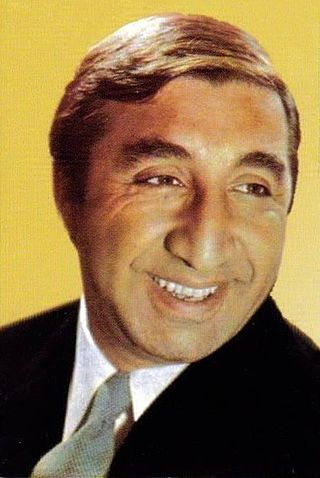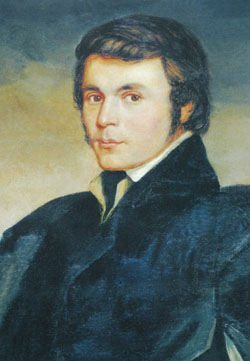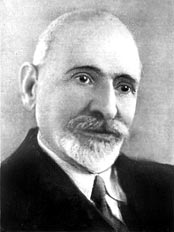
Yerevan is the capital and largest city of Armenia, as well as one of the world's oldest continuously inhabited cities. Situated along the Hrazdan River, Yerevan is the administrative, cultural, and industrial center of the country, as its primate city. It has been the capital since 1918, the fourteenth in the history of Armenia and the seventh located in or around the Ararat Plain. The city also serves as the seat of the Araratian Pontifical Diocese, which is the largest diocese of the Armenian Apostolic Church and one of the oldest dioceses in the world.

Aram Ilyich Khachaturian was a Soviet Armenian composer and conductor. He is considered one of the leading Soviet composers.

Djivan Gasparyan was an Armenian musician and composer. He played the duduk, a double reed woodwind instrument related to the orchestral oboe. Gasparyan is known as the "Master of the duduk". In 2006 he was nominated for Grammy awards for the Best Traditional World Music Album.

The Armenian Soviet Socialist Republic, also known as Soviet Armenia, ArSSR, or simply Armenia, was one of the constituent republics of the Soviet Union, located in the Caucasus region of Eurasia. Soviet Armenia bordered the Soviet Republics of Azerbaijan and Georgia and the independent states of Iran and Turkey. The capital of the republic was Yerevan and it contained thirty-seven districts (raions). Other major cities in the ArmSSR included Leninakan, Kirovakan, Hrazdan, Etchmiadzin, and Kapan. The republic was governed by Communist Party of Armenia, a branch of the main Communist Party of the Soviet Union.

Anastas Ivanovich Mikoyan was a Soviet politician and Bolshevik revolutionary who served as the Chairman of the Presidium of the Supreme Soviet, the head of state of the Soviet Union. A member of the Communist Party's Central Committee from 1923 to 1976, he was the only Soviet figure who managed to remain at the highest levels of power from the days of Lenin, through the eras of Stalin and Khrushchev, to his retirement under Brezhnev. His legacy is that of a survivor, often described with the famous quote “from Ilyich [Vladimir Ilyich Lenin] to Ilyich [Leonid Ilyich Brezhnev] without a heart attack or paralysis".

Soghomon Soghomonian, ordained and commonly known as Komitas, was an Ottoman-Armenian priest, musicologist, composer, arranger, singer, and choirmaster, who is considered the founder of the Armenian national school of music. He is recognized as one of the pioneers of ethnomusicology.

Armen Borisi Dzhigarkhanyan was a Soviet, Armenian, and Russian actor.

Mher Musheghi Mkrtchyan, better known by the name Frunzik, was an Armenian stage and film actor. Mkrtchyan is widely considered one of the greatest actors of the Soviet period among Armenians and the USSR as a whole. He received the prestigious People's Artist of the USSR award in 1984.

Khachatur Abovian was an Armenian polymath, educator, scientist, philosopher, writer, poet and an advocate of modernization. He mysteriously vanished in 1848 and was eventually presumed dead. Reputed as the father of modern Armenian literature, he is best remembered for his novel Wounds of Armenia. Written in 1841 and published posthumously in 1858, it was the first novel published in the Modern Armenian language, based on the Yerevan dialect instead of Classical Armenian.

Andranik Ozanian, commonly known as General Andranik or simply Andranik;, was an Armenian military commander and statesman, the best known fedayi and a key figure of the Armenian national liberation movement. From the late 19th century to the early 20th century, he was one of the main Armenian leaders of military efforts for the independence of Armenia.

Yeghishe Charents was an Armenian poet, writer and public activist. Charents' literary subject matter ranged from his experiences in the First World War, the Russian Revolution, and frequently Armenia and Armenians. He is recognized as "the main poet of the 20th century" in Armenia.

Aram Manukian, was an Armenian revolutionary, statesman, and a leading member of the Armenian Revolutionary Federation (Dashnaktsutyun) party. He is widely regarded as the founder of the First Republic of Armenia.

Alexander Afanasyevich Spendiarov was a Russian composer and conductor of Armenian descent, founder of Armenian national symphonic music.
FC Gandzasar Kapan is an Armenian football club based in the town of Kapan, Syunik Province. The team plays in Armenian Premier League. The club headquarters are located on 18 Garegin Nzhdeh street, Kapan. The Gandzasar Kapan Training Centre is located at the eastern outskirts of the town of Kapan.

Albert Nalchajyan is an Armenian psychologist. Spheres of his scientific interests include Psychology, Ethnology and Philosophy.
Sos Sargsyan was a prominent Armenian actor, director and writer.

Hakob Hamazaspi Manandyan was an Armenian historian, philologist, and member of the Academy of Sciences of Armenia (1943) and the Academy of Sciences of the Soviet Union (1939).

The Armenian eternity sign or Arevakhach is an ancient Armenian national symbol and a symbol of the national identity of the Armenian people. It is one of the most common symbols in Armenian architecture, carved on khachkars and on walls of churches.
Stepan Rostomyan is an Armenian composer. He is one of Armenia's key figures of the contemporary music scene, as well as a composer whose works have been performed and broadcast internationally.
Galya Novents was a Soviet and Armenian stage and film actress, one of the most prominent Armenian actresses of the 20th century.
















